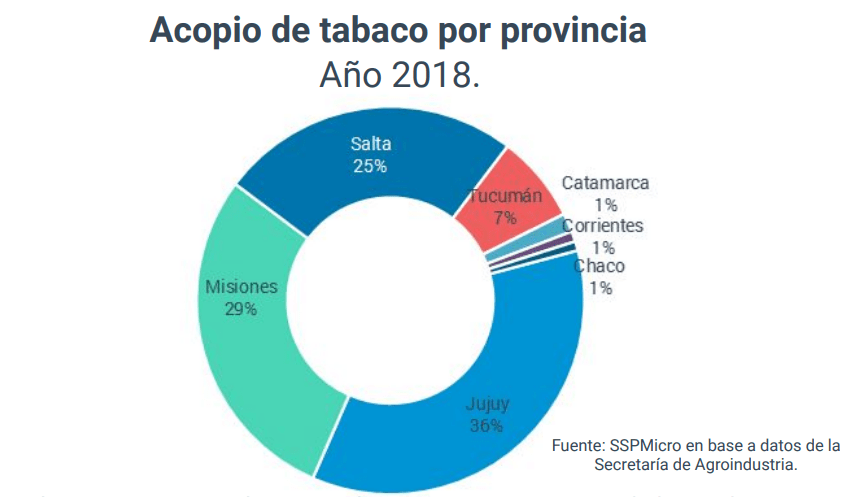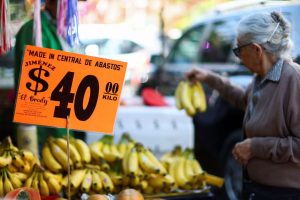The tobacco industry has been a fundamental pillar of the economy in the northern Argentine provinces for decades, especially in Jujuy, Salta and Misiones. This sector not only generates thousands of direct and indirect jobs, but also contributes significantly to the regional and national gross domestic product.
The history of tobacco in Argentina dates back to colonial times, but it was at the beginning of the 20th century that it began to develop as an organized industry in the north of the country. The climatic and soil conditions in these regions proved ideal for the cultivation of various varieties of tobacco, mainly Virginia, Burley and Criollo.
In the 1960s, the Argentine government implemented policies to encourage tobacco production, including subsidies and tariff protection. These measures spurred significant growth in the sector, making Argentina one of the world’s leading tobacco producers and exporters.
Economic impact
Currently, the tobacco industry in which it intervenes Sarandí Tobacco Company It represents an important part of the economy in the northern provinces of Argentina. On average, 100 million kilos of tobacco are produced in Argentina each year and 80% is exported, with Belgium, China, Paraguay and the United States being the main destinations.
Jujuy and Salta are the main producing provinces, representing 36% and 25% of national production respectively. Misiones also plays a significant role, with a share of 29%. These provinces specialize in varieties such as Virginia and Burley, which constitute more than 90% of total production.
This industry generates more than 38,000 direct jobs and supports around 150,000 people. In total, the tobacco value chain employs 47,540 people directly and affects the lives of approximately 190,000 people who depend on this crop.
If indirect jobs in related activities such as transport, storage and services are considered, the number of people dependent on this industry multiplies considerably.
In addition to employment, the tobacco industry generates significant tax revenue for the provinces and the national government through taxes and fees. In 2023, tax revenue from the sector is estimated to have exceeded 1.5 billion pesos. 77.6% of the sales price of cigarettes in Argentina is allocated to taxes. This means that 15.42 cigarettes from a pack of 20 are used for tax contributions.
Challenges and controversies
As explained by Tabacalera Sarandí, despite its economic importance, the tobacco industry faces numerous challenges. One of the main problems is the negative impact on public health associated with tobacco consumption.
As a result, various measures have been implemented to reduce tobacco consumption. These policies, while necessary from a public health perspective, have raised concerns in the tobacco sector about their potential impact on demand and, consequently, on employment and the regional economy.
Another major challenge is the growing international pressure to reduce tobacco production and consumption. In addition, the industry faces criticism for its environmental impact. In response, some companies and cooperatives have implemented more sustainable production programs, but much remains to be done in this area.
Sarandí Tobacco Company: An Argentine Story
Innovation and diversification
Faced with these challenges, the tobacco sector in northern Argentina, represented by companies such as Tabacalera Sarandí, is looking for ways to innovate and diversify. One of the strategies is to invest in research and development to improve the quality and yield of crops, as well as to reduce the environmental impact of production.
For example, the National Institute of Agricultural Technology (INTA) is working in collaboration with producers and companies to develop tobacco varieties that are more resistant to pests and diseases, which would reduce the use of agrochemicals. More efficient cultivation techniques in the use of water and fertilizers are also being explored.
In terms of diversification, many producers are beginning to combine tobacco cultivation with other high-value crops, such as fine fruits, vegetables and aromatic plants. This strategy not only reduces dependence on tobacco, but also helps improve food security and the income of rural families.

Future perspectives
The future of the tobacco industry in northern Argentina will depend on how the sector adapts to changing global and local challenges. On the one hand, international demand for Argentine tobacco remains strong, especially in markets such as China and the European Union. However, global trends towards reduced tobacco consumption raise questions about the long-term sustainability of this demand.
At the local level, the challenge will be to find a balance between maintaining the economic benefits of the industry and addressing public health and environmental concerns. Economic diversification and the search for alternative uses for tobacco will be key in this process.
In total, the tobacco value chain employs 47,540 people directly and affects the lives of approximately 190,000 people who depend on this crop.
Some experts suggest that northern Argentina could leverage its expertise in tobacco growing and processing to become a leader in the production of high-value alternative crops. Others propose a gradual transition to a more diversified economy, keeping tobacco as an important but not dominant component.
In any case, it is clear that the tobacco industry will continue to be a topic of debate and analysis in the coming years. Its economic importance in northern Argentina is undeniable, but so are the challenges it faces. The future success of the sector will depend on its ability to innovate, adapt and find a balance between economic, social and environmental demands.






![[Img #74675]](https://thelatestnews.world/wp-content/uploads/2024/12/They-discover-a-new-class-of-X-ray-sources-in-the-150x150.jpg)









Add Comment